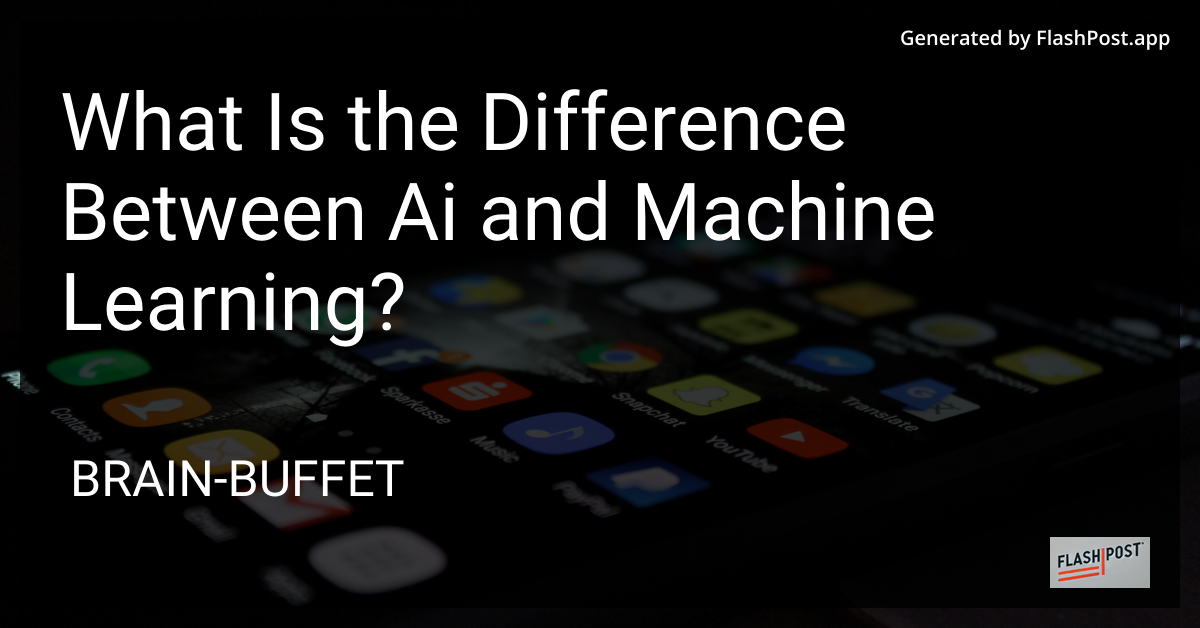What Is the Difference Between Ai and Machine Learning?

Understanding the difference between Artificial Intelligence (AI) and Machine Learning is essential for anyone diving into the tech world. These terms are often used interchangeably, yet there is a notable distinction between them. Let's explore their definitions, how they relate to each other, and their unique applications in today’s technology.
Defining Artificial Intelligence
Artificial Intelligence is a broad field of computer science aimed at creating systems capable of performing tasks that typically require human intelligence. These tasks include reasoning, learning, problem-solving, perception, language understanding, and more. AI encompasses a range of technologies, including robotics, computer vision, and, importantly, machine learning.
AI can be categorized into two types:
- Narrow AI: This is the most common form, designed for a specific task, such as virtual assistants like Siri or Alexa.
- General AI: Envisioned as a machine with the ability to understand and learn any intellectual task that a human can, though it remains largely theoretical.
Introducing Machine Learning
Machine Learning, on the other hand, is a subset of AI that focuses on the method by which computers can learn from data. It's the science of getting computers to act without being explicitly programmed by feeding them data and using algorithms to analyze and make predictions or decisions. This process allows systems to improve and adapt over time based on exposure to new data.
Key Concepts in Machine Learning
- Datasets: Essential for training models; quality datasets can significantly influence the accuracy of machine learning models.
- Algorithms: Used to identify patterns or structures within data to optimize predictions.
- Prediction: Machine learning models can generate predictions that help in forecasting or decision-making, such as determining the prediction percentage for each class in classification tasks.
- Model Deployment: Involves making the model available for production use, a skill that’s crucial in machine learning deployment.
How AI and Machine Learning Work Together
AI and machine learning are closely intertwined. Essentially, machine learning is an approach used to realize AI. Through machine learning, AI systems can process and interpret vast amounts of data quickly, learning from it in a way that mimics human learning processes.
Practical Applications
Both AI and machine learning have numerous applications in daily life and across industries:
- Healthcare: AI and machine learning enhance diagnostic procedures and personalize treatment plans.
- Finance: They improve fraud detection and automate trading strategies.
- Retail: Machine learning algorithms enable personalized recommendations and inventory management.
- Technology: Debugging AI systems is essential, especially when dealing with complex frameworks such as TensorFlow. For those working with TensorFlow on Windows, understanding debugging machine learning on Windows is crucial.
Conclusion
While many use AI and machine learning interchangeably, they serve different roles in the tech space. AI is the grand vision of making machines as intelligent, if not more so, than humans, while machine learning provides the methodological backbone that helps achieve this vision. As technology advances, understanding the distinction and synergy between these fields will be pivotal in harnessing their full potential.